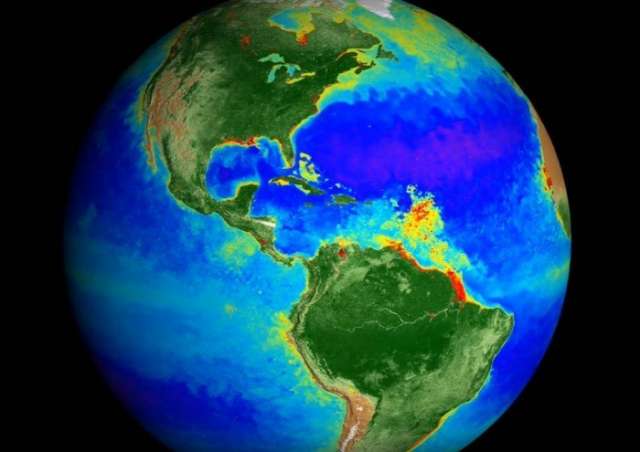Nasa map of Earth over 20 years highlights impact of climate change

The polar ice caps and snow cover are shown ebbing and flowing with the seasons. But as time passes the Arctic can be seen getting greener, as shrubs grow more widely in the warmer temperatures.
The visualisation also captures the state of the oceans and life within it. Recent years feature more and more purple patches - areas where little life thrives known as "biological deserts".
"It's like watching the Earth breathe. It's really remarkable," said Jeremy Werdell, a Nasa oceanographer who took part in the project.
"It's like all of my senses are being transported into space, and then you can compress time and rewind it, and just continually watch this kind of visualization.”
This autumn marks 20 years since Nasa began a continuous, global view of life on both land and sea using multiple satellites known as the Sea-viewing Wide Field-of-view Sensor.
Mr Werdell said the visualization shows spring coming earlier and autumn lasting longer in the Northern Hemisphere. Also noticeable to him is the Arctic ice caps receding over time — and, though less obvious, the Antarctic, too.
On the sea side, Mr Werdell was struck by "this hugely productive bloom of biology" that exploded in the Pacific along the equator from 1997 to 1998, when a water-warming El Nino event merged into cooling La Nina. This algae bloom is evident by a line of bright green.
In considerably smaller Lake Erie, one of the five Great Lakes in North America, more and more contaminating algae blooms are apparent — appearing red and yellow.
All this data can provide resources for policymakers as well as commercial fishermen and many others, according to Mr Werdell.
Programmer Alex Kekesi, at Nasa's Goddard Space Flight Center in Maryland, said it took three months to complete the visualization using satellite imagery.
Just like our Earth, the visualization will continually change, officials said, as computer systems improve, new remote-sensing satellites are launched and more observations are made.















































